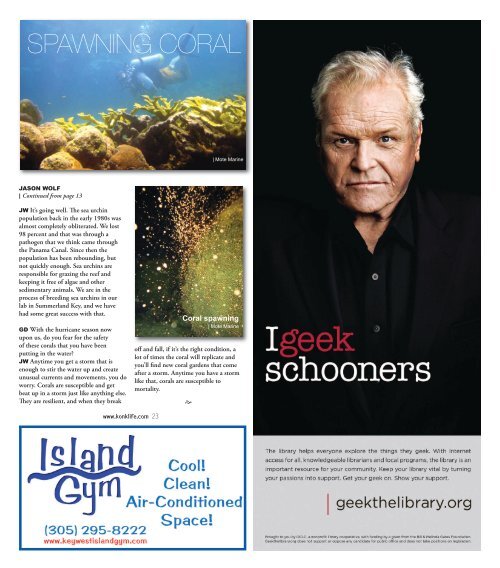You also want an ePaper? Increase the reach of your titles
YUMPU automatically turns print PDFs into web optimized ePapers that Google loves.
SPAWNING CORAL<br />
JASON WOLF<br />
| Continued from page 13<br />
JW It’s going well. e sea urchin<br />
population back in the early 1980s was<br />
almost completely obliterated. We lost<br />
98 percent and that was through a<br />
pathogen that we think came through<br />
the Panama Canal. Since then the<br />
population has been rebounding, but<br />
not quickly enough. Sea urchins are<br />
responsible for grazing the reef and<br />
keeping it free of algae and other<br />
sedimentary animals. We are in the<br />
process of breeding sea urchins in our<br />
lab in Summerland Key, and we have<br />
had some great success with that.<br />
GD With the hurricane season now<br />
upon us, do you fear for the safety<br />
of these corals that you have been<br />
putting in the water?<br />
JW Anytime you get a storm that is<br />
enough to stir the water up and create<br />
unusual currents and movements, you do<br />
worry. Corals are susceptible and get<br />
beat up in a storm just like anything else.<br />
ey are resilient, and when they break<br />
www.konklife.com 23<br />
Coral spawning<br />
| Mote Marine<br />
off and fall, if it’s the right condition, a<br />
lot of times the coral will replicate and<br />
you’ll find new coral gardens that come<br />
after a storm. Anytime you have a storm<br />
like that, corals are susceptible to<br />
mortality.<br />
e<br />
| Mote Marine
















